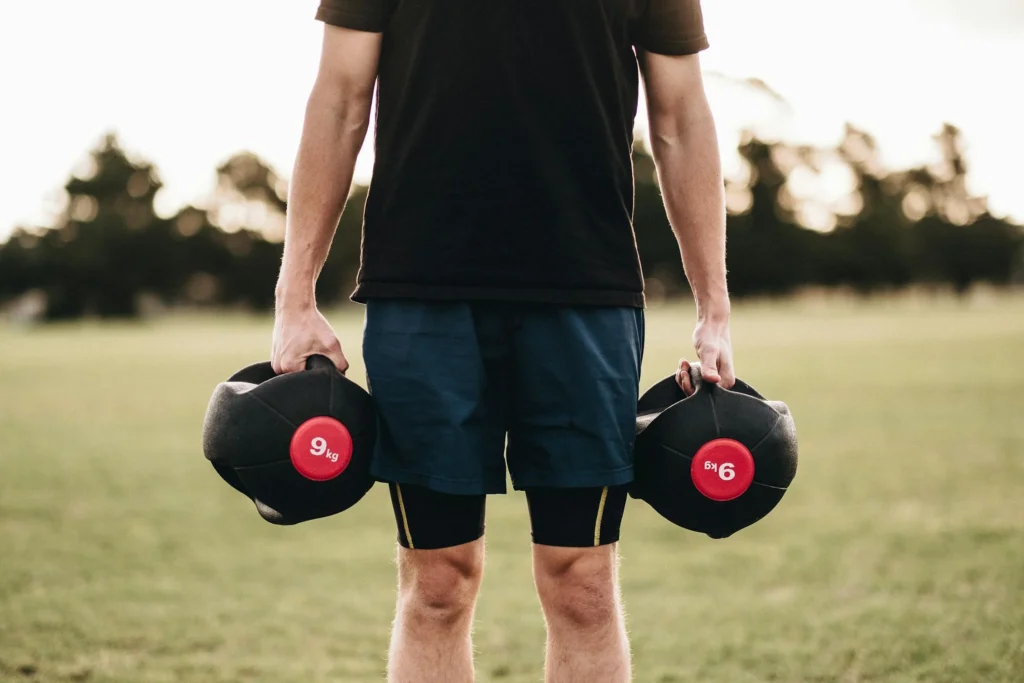In our increasingly sedentary and stress-filled world, the pursuit of physical activity and mental well-being has become more critical than ever. It’s not just about looking good in a swimsuit; it’s about cultivating a holistic sense of health that nourishes both body and mind. This blog post will delve into the multifaceted ways you can become more physically active and, in turn, experience a greater sense of mental release. It’s not a one-size-fits-all approach; it’s a journey of self-discovery and finding what works best for you.

The Intertwined Nature of Physical and Mental Well-being
Physical activity and mental well-being are inextricably linked. When you move your body, you’re not just strengthening muscles and improving cardiovascular health; you’re also triggering a cascade of neurochemical changes in the brain that have profound effects on mood, stress levels, and cognitive function. Conversely, when your mind is at ease, you’re more likely to feel motivated and energized to engage in physical activity. It’s a virtuous cycle, each reinforcing the other.
Breaking Down the Barriers: Why We Struggle
Before we explore solutions, it’s essential to acknowledge the common obstacles that prevent us from being more physically active:
- Lack of Time: The most common excuse. We convince ourselves we’re too busy, but often, it’s a matter of prioritizing and managing our time effectively.
- Lack of Motivation: Sometimes, we simply don’t feel like it. This can stem from fatigue, stress, or a general lack of interest in traditional exercise.
- Discomfort or Pain: Past injuries, chronic pain, or simply feeling out of shape can make the prospect of physical activity daunting.
- Self-Consciousness: Fear of judgment or feeling awkward in a gym or public space can be a significant deterrent.
- Lack of Knowledge: Not knowing where to start or what types of activities are suitable can lead to inaction.
- Mental Health Challenges: Depression, anxiety, and other mental health conditions can make it difficult to find the motivation or energy for physical activity.
Building a Foundation: Small Steps, Big Impact
The key to becoming more physically active is to start small and gradually build momentum. Here’s a step-by-step approach:
- Assess Your Current Activity Level: Be honest with yourself. Are you completely sedentary, or do you engage in some form of movement already? This will help you determine a realistic starting point.
- Set Realistic Goals: Don’t try to go from couch potato to marathon runner overnight. Start with small, achievable goals, such as walking for 15 minutes three times a week. As you progress, you can gradually increase the duration and intensity.
- Find Activities You Enjoy: Exercise shouldn’t feel like a chore. Explore different types of physical activity until you find something you genuinely enjoy. This could be anything from dancing to swimming to hiking to playing a sport.
- Schedule It In: Treat your physical activity like any other important appointment. Block out time in your calendar and stick to it as much as possible.
- Find a Workout Buddy: Having someone to exercise with can provide motivation, accountability, and make the experience more enjoyable.
- Start Slowly and Gradually Increase Intensity: Don’t push yourself too hard, especially in the beginning. Listen to your body and gradually increase the intensity and duration of your workouts to avoid injury.
- Celebrate Your Successes: Acknowledge and celebrate your achievements, no matter how small. This will help you stay motivated 1 and build confidence. 1. ivy.fm ivy.fm
Exploring Different Avenues of Physical Activity
The world of physical activity is vast and diverse. Here are some options to consider:
- Walking: A simple, accessible, and low-impact activity that can be enjoyed by people of all fitness levels.
- Running: A great way to improve cardiovascular health and endurance. Start with a run/walk program if you’re new to running.
- Swimming: A full-body workout that is gentle on the joints.
- Cycling: A fun and efficient way to get around and explore your surroundings.
- Yoga: Combines physical postures, breathing techniques, and meditation to improve flexibility, strength, and mental well-being.
- Pilates: Focuses on core strength and stability, improving posture and balance.
- Dance: A fun and expressive way to get your heart rate up and improve coordination.
- Team Sports: Provide a social outlet and a sense of camaraderie while getting a good workout.
- Strength Training: Builds muscle mass and improves bone density. Can be done with weights, resistance bands, or bodyweight exercises.
- High-Intensity Interval Training (HIIT): Involves short bursts of intense exercise followed by brief recovery periods. An efficient way to burn calories and improve fitness.
The Mental Release: Beyond the Physical
The benefits of physical activity extend far beyond the physical realm. Here’s how it contributes to mental well-being:
- Stress Reduction: Exercise is a natural stress reliever. It helps to reduce the levels of stress hormones in the body and releases endorphins, which have mood-boosting effects.
- Improved Mood: Regular physical activity can help to alleviate symptoms of depression and anxiety.
- Enhanced Cognitive Function: Exercise improves blood flow to the brain, which can enhance memory, focus, and cognitive function.
- Better Sleep: Regular physical activity can improve sleep quality, making it easier to fall asleep and stay asleep.
- Increased Self-Esteem: Achieving fitness goals and feeling stronger and healthier can boost self-esteem and confidence.
- Mindfulness and Connection with Nature: Activities like hiking, walking in nature, or practicing yoga outdoors can promote mindfulness and a sense of connection with the natural world, which can be incredibly calming and grounding.
Cultivating a Mindset for Success
Becoming physically active and experiencing mental release is not just about the activities themselves; it’s also about cultivating a supportive mindset:
- Be Patient and Kind to Yourself: Don’t get discouraged if you miss a workout or don’t see results immediately. Be patient with yourself and celebrate your progress.
- Focus on the Process, Not Just the Outcome: Enjoy the journey of becoming more active. Focus on the feeling of your body moving, the fresh air in your lungs, and the sense of accomplishment after a workout.
- Embrace Imperfection: Don’t strive for perfection. It’s okay to have off days or to modify your workouts as needed. The important thing is to keep moving.
- Visualize Success: Imagine yourself achieving your fitness goals and experiencing the positive effects of physical activity on your mental and physical health.
- Surround Yourself with Positive Influences: Seek out friends, family members, or online communities that support your health and fitness goals.
Integrating Physical Activity into Daily Life
Making physical activity a regular part of your life doesn’t require drastic changes. Here are some simple ways to integrate more movement into your day:
- Take the Stairs Instead of the Elevator: A small but effective way to burn more calories.
- Walk or Cycle for Short Errands: Instead of driving, consider walking or cycling for short trips.
- Park Further Away: Park a little further from your destination to get in some extra steps.
- Take Breaks to Move Around: If you have a desk job, take short breaks throughout the day to stretch and move around.
- Get Up and Move During Commercials: Instead of sitting on the couch during TV commercials, use that time to do some light stretching or walk around the house.
Conclusion: A Journey of Self-Discovery
Becoming physically active and experiencing mental release is a journey of self-discovery. It’s about finding what works best for you, embracing the process, and being patient and kind to yourself along the way. By prioritizing physical activity and cultivating a supportive mindset, you can unlock the powerful connection between body and mind, leading to a healthier, happier, and more balanced life. It’s not just about adding years to your life, but adding life to your years. It’s about feeling more vibrant, more energized, and more connected to yourself and the world around you. So, take that first step, explore different avenues of movement, and discover the joy of being physically active and mentally released.





Leave a Reply
You must be logged in to post a comment.